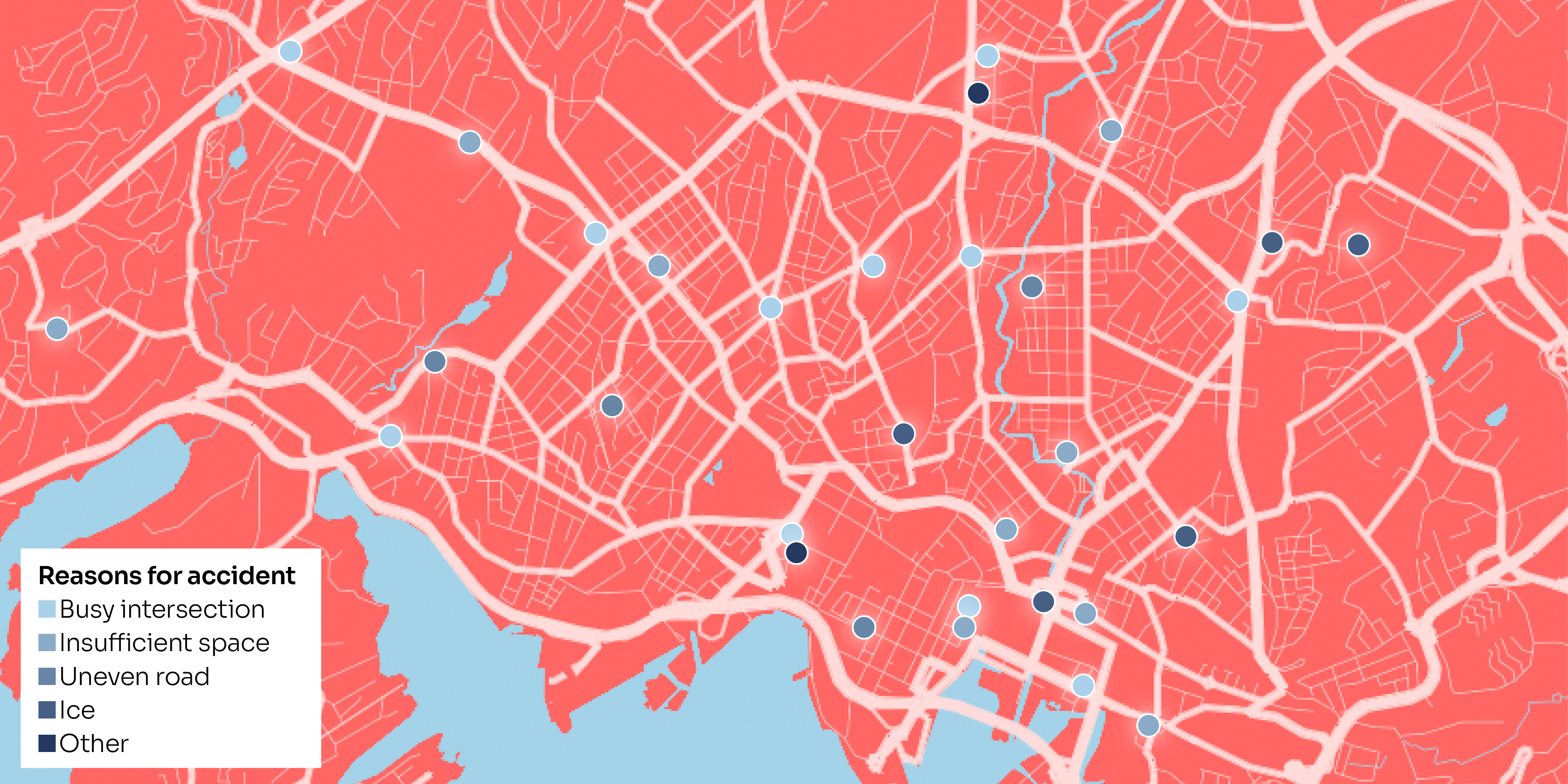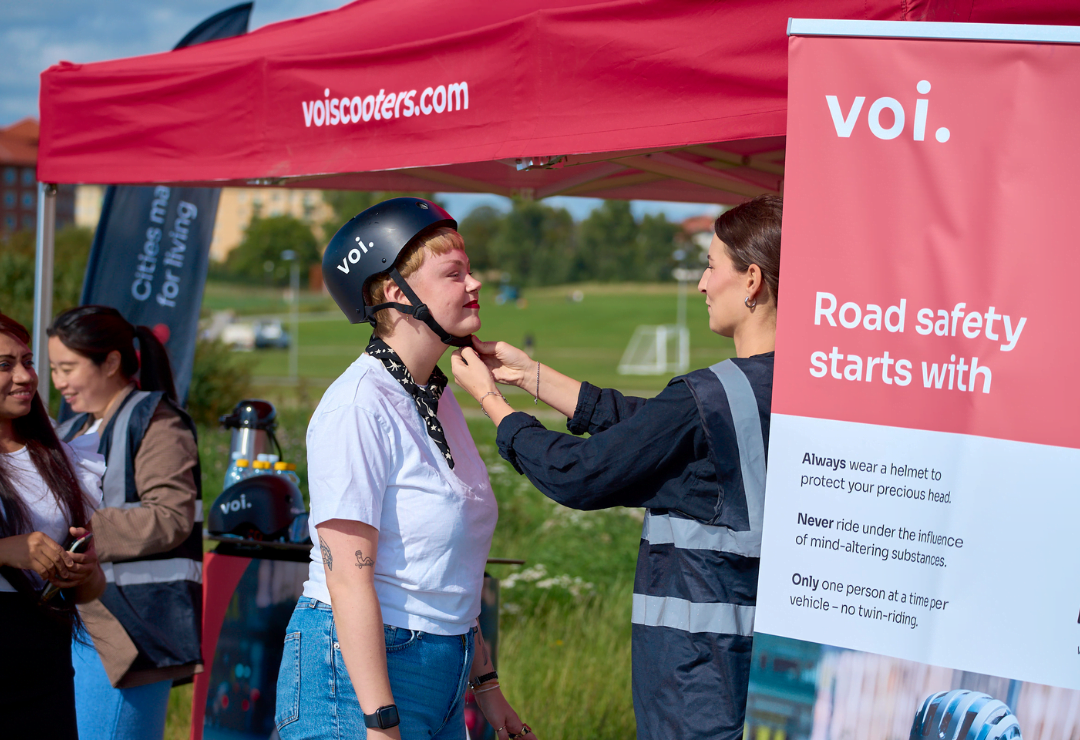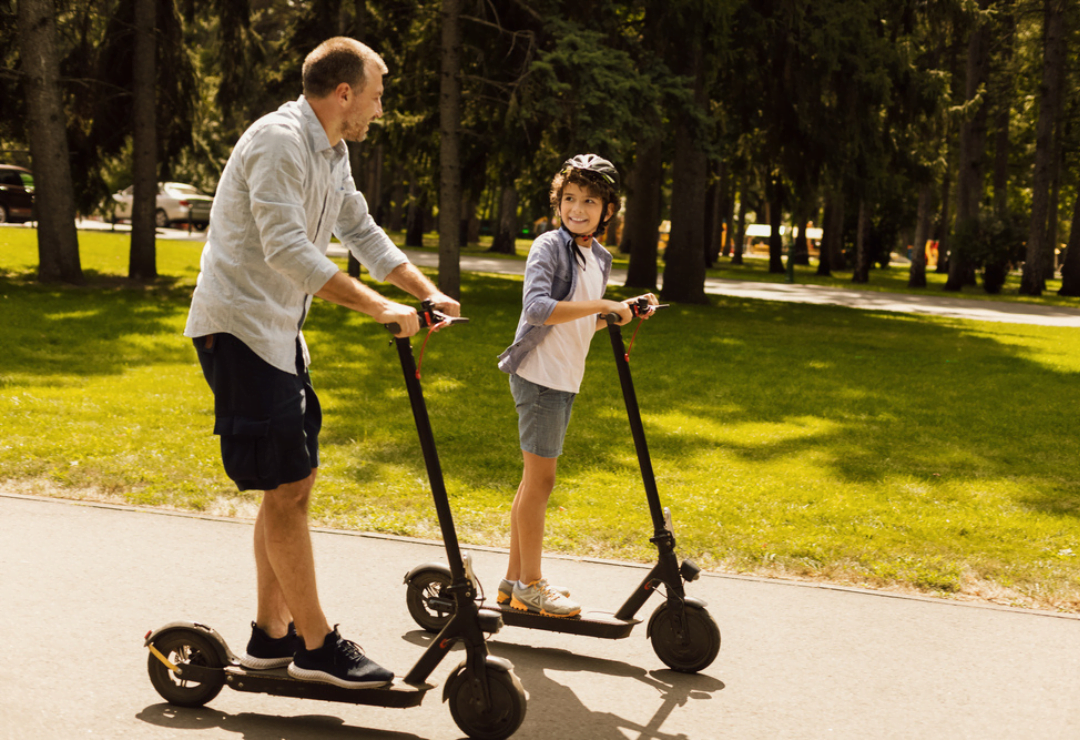Safety First
Uncover the innovative safety technologies and approaches that set Voi apart in the dynamic world of micromobility. Explore how Voi collaborates with local authorities, harnesses data analytics, and engages stakeholders to enhance safety for riders and other road users.
An interview with Christy Pearson, elaborated by Alessia Giorgiutti.
To listen to the recording of the article below, please accept all cookies.
POLIS: In the rapidly evolving landscape of micromobility, how do major players in the industry differentiate their safety initiatives, and what unique safety technologies or approaches does Voi bring to the table?
Christy Pearson: In recent years, we have observed that operators tend to draw inspiration from each other's safety initiatives. This not only elevates the overall safety standards across the industry but also fosters healthy competition that pushes the boundaries of innovation in safety. Operators are particularly motivated to outperform their peers to secure operating licenses in cities through competitive tenders.

Christy Pearson, Director of Central Policy, Voi
As the industry has matured, we have noticed a shift in focus. It has moved from merely promoting cutting-edge technology to prioritising the assurance of cities that they are choosing responsible partners with a strong track record of compliance. For instance, there's a growing expectation for operators to implement robust internal procedures that ensure the safety of riders, other road users, and employees. This is where operators can distinguish themselves.
Furthermore, operators can set themselves apart through transparency and accountability in their operational setups, reporting procedures, and data-sharing practices.
However, it is important to note that this shift in focus does not mean operators have ceased their efforts on differentiation with inspiring safety initiatives. One noteworthy example from Voi is our recently launched traffic education platform, RideSafe Academy. Traffic rules education is essential for enhancing safety for both riders and non-users, and Voi is committed to playing its part. We had a previous safety education platform that has already benefited over 600,000 users since its launch in 2019. Compared to the older platform, RideSafe Academy is now accessible to everyone, regardless of whether you have a Voi account.
POLIS: Micromobility services involve collaboration with local authorities and municipalities. How do companies like Voi navigate these partnerships to collectively address safety concerns?
Pearson: Effective cross-sector collaboration is essential for unlocking the full potential of shared micromobility. We maintain close partnerships with local authorities and municipalities, not only to ensure compliance with local regulations but also to work with them to enhance service and parking design.
One area where we envision deeper public-private collaboration is in data sharing to facilitate the creation of safer cities. We firmly believe that the data collected from our connected vehicles can offer tremendous benefits for urban planning. As an example, in Oslo, we share data related to accident locations and other vehicle sensor data with the Norwegian Institute of Transport Economics. They leverage this information to analyse accident-prone locations. Furthermore, we increasingly collaborate with partner companies and researchers to explore how vehicle sensor data can be utilised to assess street conditions.

Hazardous areas for road users in Oslo. Credit: Voi
We use insights derived from this data on road conditions and accident-prone areas to build safety features, such as in-app navigation guiding users to safer routes. However, we believe it is even more advantageous if these insights are utilised to make streets safer. To maximise the value of this data, we must understand how cities can best leverage it. Additionally, the more cities understand the capabilities of operators, the better equipped they will be to request data, particularly through tender processes.
This example is just one illustration of how the value of shared micromobility can be enhanced through deepened cross-sector collaboration and a willingness to learn from each other. By fostering a mutual understanding, we can collaboratively work towards making cities safer and more sustainable.
POLIS: How do you leverage data analytics to proactively identify safety trends and implement preventive measures in your operations?
Pearson: Our teams diligently analyse data on a daily basis from a wide array of sources to identify safety trends and potential risks. Based on these insights, we develop features aimed at enhancing safety for both our users and our internal safety practices. For instance, we have internally implemented features that allow us to predict vehicle maintenance needs by leveraging data derived from over 200 million rides.

Voi’s updated RideSafe Academy, now available for everyone. Credit: Voi
This feature empowers our on-the-ground teams to identify vehicles that require attention before they break down. This is not just crucial for ensuring that our vehicles are safe every time they are used; it also plays a vital role in reducing the wear and tear associated with repairing broken vehicles.
At Voi, we have established a multi-functioning safety detection working group. This group examines data, and trends, and conducts additional research to gain a deeper understanding of safety risks within our service. They collaborate on identifying actions to mitigate these risks and provide regular reports to a Safety Committee, which convenes at least once a month to make decisions regarding these actions. This structured process ensures that safety remains a top priority in our product and operational development efforts.
POLIS: How does Voi actively engage with these different road users and incorporate their feedback into safety enhancements?
Pearson: We actively seek engagement with various associations across different markets to incorporate their feedback and make our services more inclusive. For instance, over the years, we have collaborated with visually impaired associations in several countries to enhance parking facilities that cater to their specific needs.

Safety event in Stockholm. Credit: Voi
In the UK, we partnered with the Royal National Institute for Blind People to develop specialised parking racks. Similarly, in Norway and Sweden, we have worked closely with national visually impaired associations to create guidelines on the placement of parking spots for micromobility, ensuring the safety of vulnerable road users.
Beyond our work with associations to mitigate negative impacts, we also collaborate with other organisations to advocate for improved bike infrastructure and speed management for heavy vehicles. While we recognise the challenges shared micromobility may pose for vulnerable road users, it's essential to remember that the underlying issue is the excessive space consumption by cars in our cities. Cities must invest in good bike infrastructure to promote sustainable mobility, and it's crucial that as many people and organisations as possible express support for policymakers to take action.
Click here to read the article in its original format.
About the contributors:
Interviewee: Christy Pearson is the Director of Central Policy for Voi, a micromobility operator based in Sweden. In her role, she focuses on how micromobility operators can work collaboratively with cities to improve safety, parking, sustainability and public transport connectivity. She is passionate about inclusivity, in particular gender equity of transport services.
Interviewer: Alessia Giorgiutti coordinates POLIS' corporate communications and magazine and has been involved in several EU-funded projects as Communications and Membership Lead. She currently supports other managers and officers on tasks related to content production and communication for their projects. Her work focuses on making accessible and inclusive content about transport, as well as highlighting the experiences of marginalised users.
